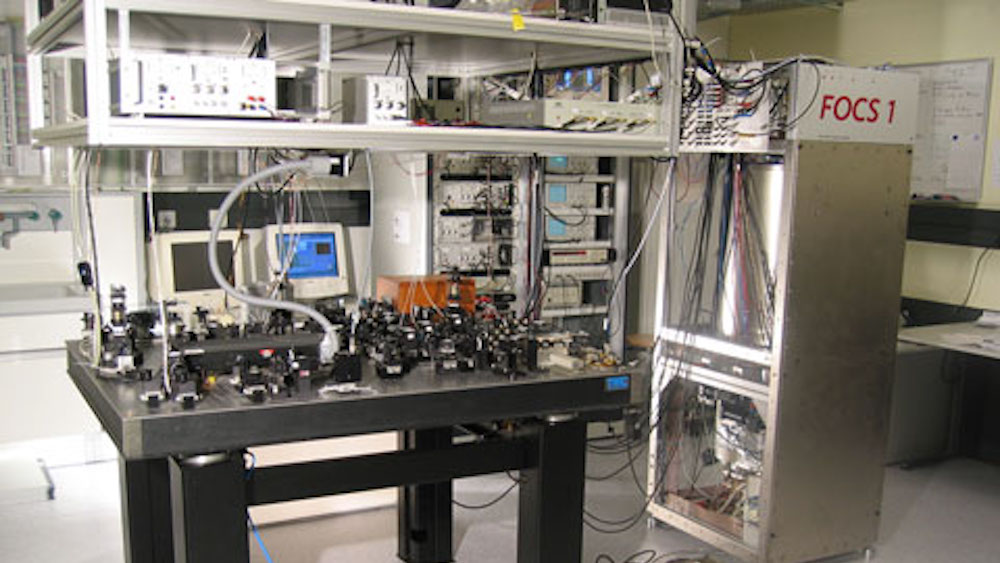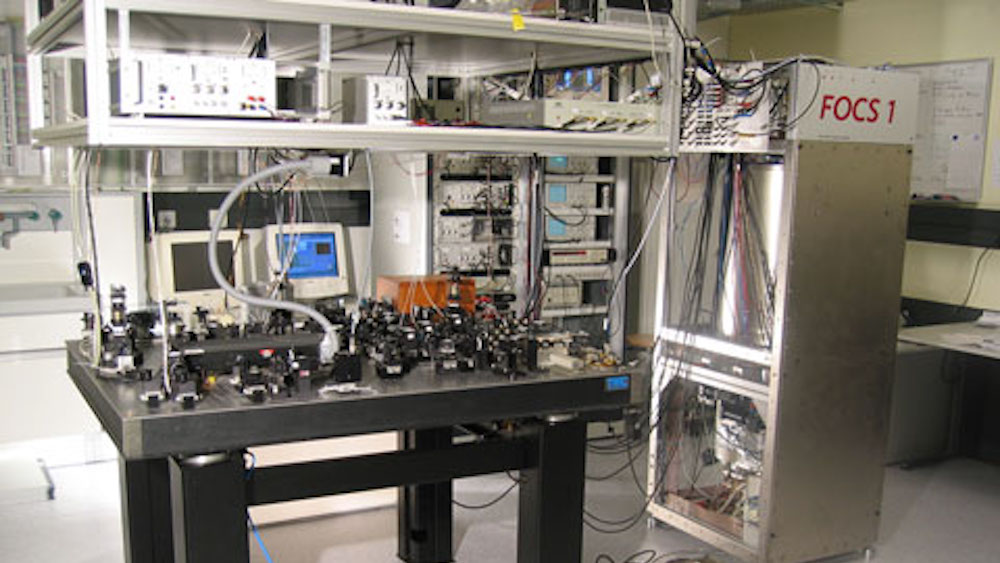
Atomic Clock FOCS-1 (Switzerland). The primary frequency standard device, FOCS-1, one of the most accurate devices for measuring time in the world. It stands in a laboratory of the Swiss Federal Office of Metrology METAS in Bern.
The main driver will be the need for atomic clocks in “mass market” applications, notably autonomous vehicles. At present time, the atomic clock market is under US $300 million, but is expected to reach around $710 million in five years and about US $1 billion by 2029.
Inside the Report
This report quantifies the new business opportunities for atomic clocks in the coming decade in the form of extensive ten-year forecasts.Breakouts are provided by end-user, type of technology and country where the revenues will be generated.These projections are provided in both value and volume terms.
This report is urgently needed because the commercial environment for atomic clocks is in the process of profound change and interesting new opportunities are emerging. New applications are appearing regularly, including “mass market” applications (notably autonomous vehicles) and these are in need of immediate market analysis.
The report also discusses the commercial implications of technology change in the atomic clock space. Next-generation chip-scale atomic clocks (CSACs) are opening up new markets for atomic clocks and are also likely to enable lower pricing for these devices. Meanwhile, new materials for atomic clocks are not only improving the performance of atomic clocks and lead to new business ideas as to where they can be used.
Within this dynamic environment, we profile key suppliers of atomic clocks such as Accubeat, Casic, Microsemi, OroliaGroup, Oscilloquartz, Excelitas, MTI Milliren, Quartzlock, Stanford Research Systems, Chengdu Spaceon Electronics, Teledyne E2V, and Zurich instruments among others. We think this report will be essential reading for product, marketing and strategy executives throughout the atomic clock, quantum sensor, positioning/navigation, and networking sectors. The report will also be of considerable interest to the growing number of investors in the emerging quantum sensor ecosystem.
From the Report
The potential market for autonomous vehicles is vast.There are over 90 million cars and commercial vehicles produced each year.The atomic clocks in this space will be both miniature atomic clocks and chip scale atomic clocks (CSACs).Inside Quantum Technology’s projects that the market for clocks in autonomous vehicles could reach around $300 million by 2025 from negligible amounts now.Other consumer products may also be impacted by the rise of CSACs.These devices have power requirements from one watt down to about 100 milliwatts and their size opens up mobile battery powered applications.This will open up markets for very small hand-held devices.However, the report warns that if a serious economic recession follows the “corona virus” outbreak the outlook for consumer atomic clocks will be distinctly negative.
While growth in infrastructure applications will not be as rapid as in the consumer sector, new applications for atomic clocks in infrastructure is expected to grow significantly in the next few years to $150 million by 2025.Two areas where we expect growth is in 5G mobile, which requires more accurate atomic clocks than those currently used in wireless technology.Inside Quantum believes that the 5G rollout will provide steady growth of high accuracy Rb based clocks.Likewise, as the power grid becomes more intelligent, there will be steady demand for atomic clocks for grid synchronization in smart grid applications.Nonetheless, these exciting opportunities must be measured against the fact that 5G’s great potential has a long way to go before it is proven and new technology in the electricity grid is always deployed slowly.
Although the military market for quantum clocks is not huge, the R&D that is being carried out in the military will have spin off effects leading to improved technology in other atomic clock applications.There are several new technology developments to note in atomic clocks of which the most obvious is the rise of CSACs (0.6 million expected to be sold in 2025).Other important technology developments in the atomic clock space are the appearance of clocks based on optical technology and solid-state physics and the use of new materials such as strontium and rare earth doped silicon.
Inside the Report
This report quantifies the new business opportunities for atomic clocks in the coming decade in the form of extensive ten-year forecasts.Breakouts are provided by end-user, type of technology and country where the revenues will be generated.These projections are provided in both value and volume terms.
This report is urgently needed because the commercial environment for atomic clocks is in the process of profound change and interesting new opportunities are emerging. New applications are appearing regularly, including “mass market” applications (notably autonomous vehicles) and these are in need of immediate market analysis.
The report also discusses the commercial implications of technology change in the atomic clock space. Next-generation chip-scale atomic clocks (CSACs) are opening up new markets for atomic clocks and are also likely to enable lower pricing for these devices. Meanwhile, new materials for atomic clocks are not only improving the performance of atomic clocks and lead to new business ideas as to where they can be used.
Within this dynamic environment, we profile key suppliers of atomic clocks such as Accubeat, Casic, Microsemi, OroliaGroup, Oscilloquartz, Excelitas, MTI Milliren, Quartzlock, Stanford Research Systems, Chengdu Spaceon Electronics, Teledyne E2V, and Zurich instruments among others. We think this report will be essential reading for product, marketing and strategy executives throughout the atomic clock, quantum sensor, positioning/navigation, and networking sectors. The report will also be of considerable interest to the growing number of investors in the emerging quantum sensor ecosystem.
From the Report
The potential market for autonomous vehicles is vast.There are over 90 million cars and commercial vehicles produced each year.The atomic clocks in this space will be both miniature atomic clocks and chip scale atomic clocks (CSACs).Inside Quantum Technology’s projects that the market for clocks in autonomous vehicles could reach around $300 million by 2025 from negligible amounts now.Other consumer products may also be impacted by the rise of CSACs.These devices have power requirements from one watt down to about 100 milliwatts and their size opens up mobile battery powered applications.This will open up markets for very small hand-held devices.However, the report warns that if a serious economic recession follows the “corona virus” outbreak the outlook for consumer atomic clocks will be distinctly negative.
While growth in infrastructure applications will not be as rapid as in the consumer sector, new applications for atomic clocks in infrastructure is expected to grow significantly in the next few years to $150 million by 2025.Two areas where we expect growth is in 5G mobile, which requires more accurate atomic clocks than those currently used in wireless technology.Inside Quantum believes that the 5G rollout will provide steady growth of high accuracy Rb based clocks.Likewise, as the power grid becomes more intelligent, there will be steady demand for atomic clocks for grid synchronization in smart grid applications.Nonetheless, these exciting opportunities must be measured against the fact that 5G’s great potential has a long way to go before it is proven and new technology in the electricity grid is always deployed slowly.
Although the military market for quantum clocks is not huge, the R&D that is being carried out in the military will have spin off effects leading to improved technology in other atomic clock applications.There are several new technology developments to note in atomic clocks of which the most obvious is the rise of CSACs (0.6 million expected to be sold in 2025).Other important technology developments in the atomic clock space are the appearance of clocks based on optical technology and solid-state physics and the use of new materials such as strontium and rare earth doped silicon.




 IonQ Achieves Industry Leading Performance on Next Generation Barium Qubits
IonQ Achieves Industry Leading Performance on Next Generation Barium Qubits